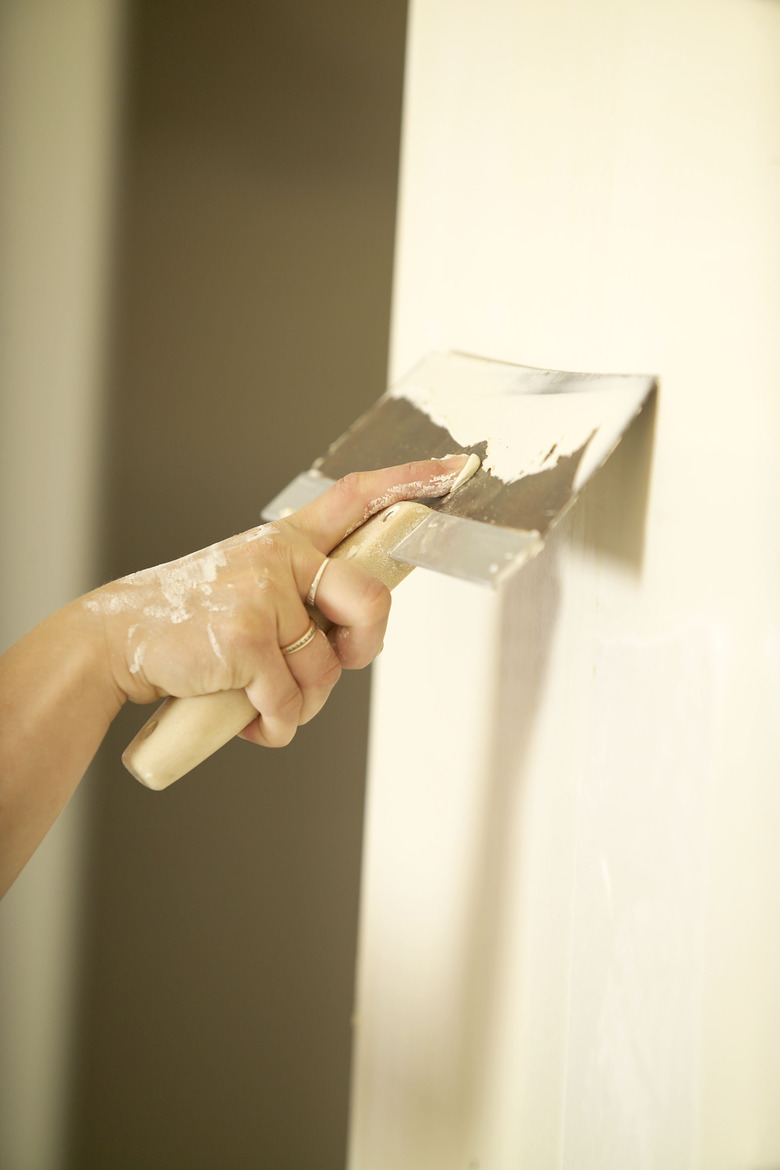What Could Cause The Plaster On A Wall To Become Powdery?
Plaster is a wall finishing material, used for centuries. It can be applied over concrete or cinder block, brick, stone or wood. It creates a durable, hard surface that conforms to flat or curved walls and ceilings. Plaster fell out of favor in the late 1940s as gypsum drywall board came on the scene. Plaster can last for hundreds of years, but has one major enemy that will cause plaster walls to become powdery.
Moisture -- the Problem
Old plaster from the 19th century was based on lime held together with sand and animal hair. Around 1900, gypsum plaster began to displace lime plaster because gypsum didn't need the animal hair binder and cured within three weeks rather than 9 to 12 months. But whether lime-based or gypsum-based, plaster's biggest enemy is moisture. The first symptom of a moisture problem is a fine white powder on the plaster surface caused by soluble salts that migrate to the surface of the plaster. If the wall stays wet, the plaster eventually will crumble.
Water Sources
Plaster applied to brick or block walls can suffer exposure to moisture if the exterior of the masonry wall constantly experiences water from rain, runoff, splashback or wet soil. The water eventually will bleed through the masonry to the interior. Other sources of wall or ceiling moisture include leaky plumbing, roof leaks, window leaks or roof runoff that leaks into the wall. Some companies market wall coatings they claim will stop moisture bleed-through, but these are only temporary fixes. You must find and eliminate the source of the wall moisture before you repair the plaster or the plaster will powder and fail again.
Wall Rehab
A plaster surface that has only minimal powdering can be saved. First, find and fix the source of the moisture that caused the powdering plaster. Next, wipe the powdered surface with a mixture of one part white household vinegar to four parts water. This acidic solution will re-harden the plaster surface. After the plaster dries thoroughly, coat it with a good-grade primer formulated for plaster. Once the primer dries, coat the surface with compatible finish paint.
Replace Wall
Plaster that's been badly damaged by long-term water exposure can't be saved. It must be removed and replaced. Once you find and fix the source of the moisture, you must pry off the water-damaged plaster down to the lath. If the wooden lath is sound, you can reuse it. Re-nail the lath and wet it before you plaster over it. Or you can replace the wooden lath with metal lath and plaster over that. Make sure the new plaster matches the thickness of the original plaster. The new plaster should cure for three weeks before painting. Use an alkaline-resistant primer formulated for use on new plaster, then apply a compatible latex- or oil-based finish coat of paint.
